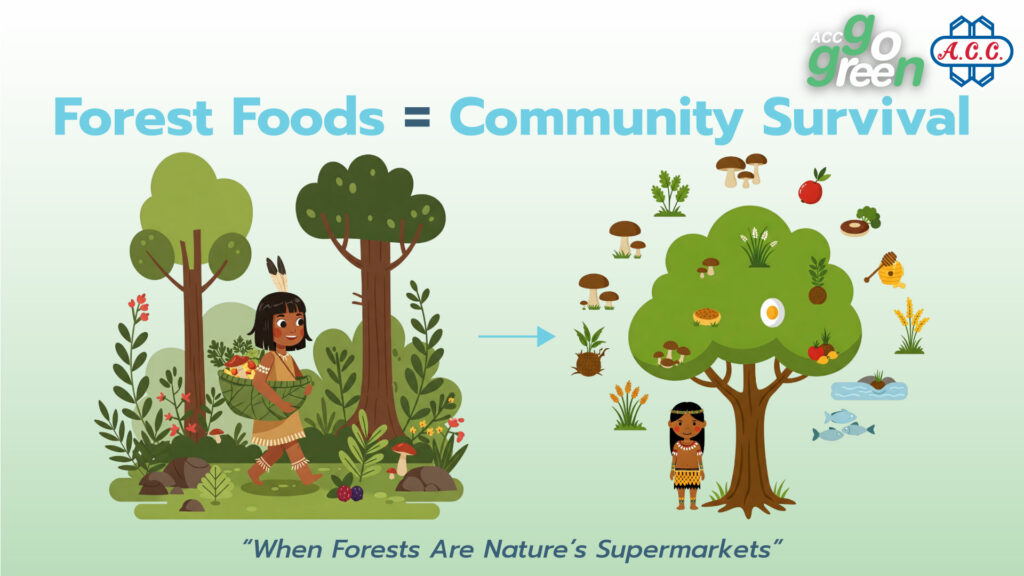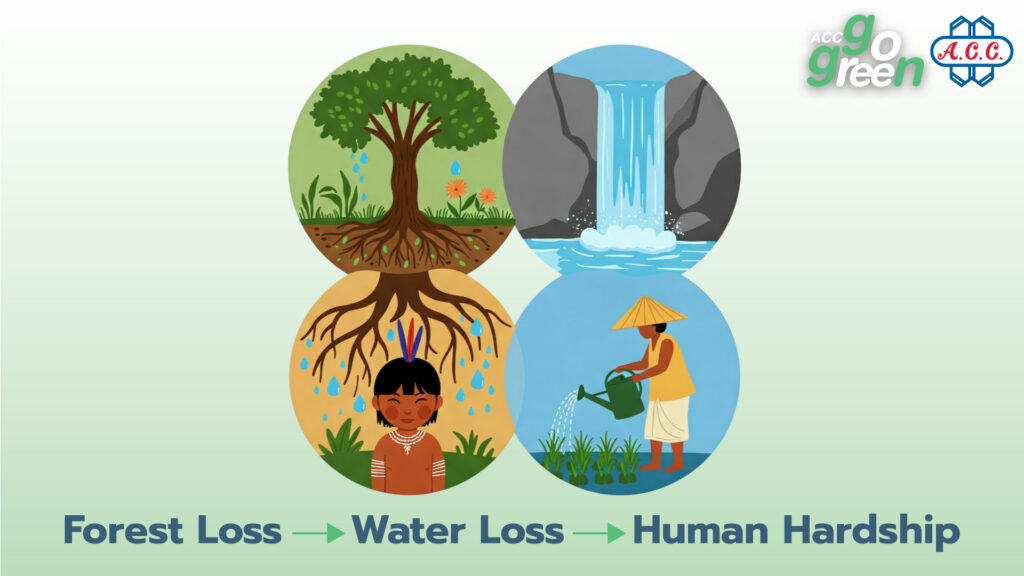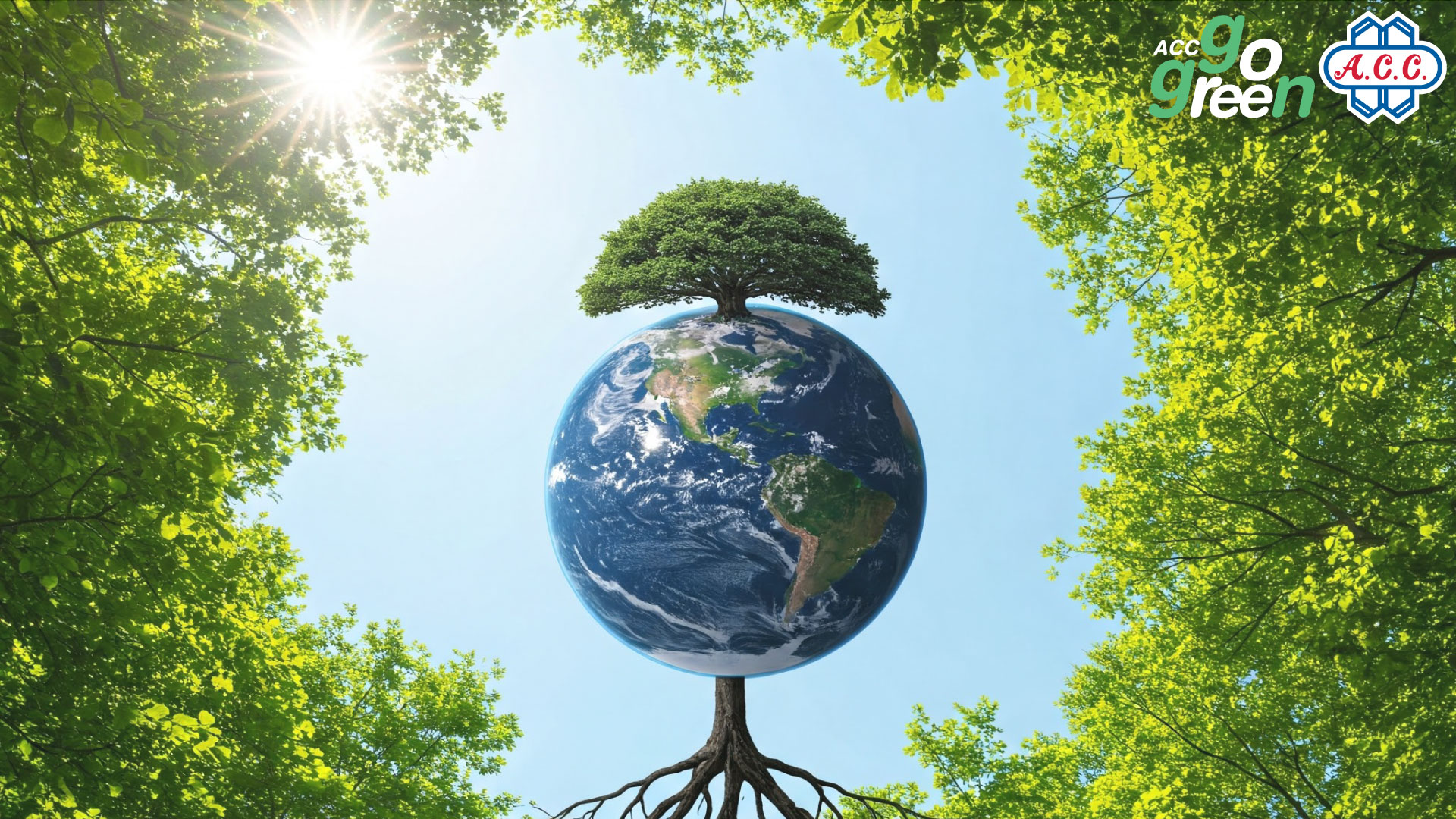In an era where natural resources are noticeably declining, forest conservation is no longer just about protecting trees or wildlife, but a matter intricately linked to major global issues such as biodiversity, water crises, food security and even human health. The loss of forest areas not only leads to the degradation of nature, but also affects the climate, ecosystems, and the long-term quality of life for all of us.
Forests are not only the sources of water or habitats for wildlife, but they are also carbon dioxide absorbers that play a vital role in regulating the climate. Forests help prevent landslides, absorb particulate matter, and retain moisture in the air. However, over the past few decades, deforestation for various activities such as industrial agriculture, mining, or even urban development projects has caused our world to lose valuable resources regrettably. This article will explore how forest conservation relates to various issues and what methods we can use to collectively protect forests sustainably.
The Importance of Forests for Ecosystems and Humans
Forests play a crucial role in absorbing carbon dioxide from the atmosphere, which helps reduce greenhouse gas emissions and alleviate global warming. Moreover, forests are sources of freshwater, maintaining the water cycle and preventing floods and droughts. They are also home to a variety of wildlife and plant species, promoting biodiversity and serving as essential resources for humans, such as timber, medicinal herbs and food.
Forests and Food Security
Many people may not know that natural forest areas are important food sources in many regions of the world, especially indigenous communities that still rely on forest resources. These include wild vegetables, mushrooms, medicinal herbs, honey and wildlife. When forests are destroyed, these resources disappear as well, leading to food scarcity and increased dependence on processed food, which is detrimental to long-term health.
 Forests and Aquatic Ecosystems
Forests and Aquatic Ecosystems
Trees in forests act as natural water reservoirs, helping to control the amount of water in rivers and canals and prevent floods during the rainy season. They also help retain soil moisture during the dry season. Without forests, rainwater flows rapidly through the soil without seeping into underground layers, causing alternating droughts and severe floods and disrupting the balance of aquatic ecosystems.
 Forests and Biodiversity Conservation
Forests and Biodiversity Conservation
Forest areas are home to more than half of all living species on Earth. This diversity is not only beautiful but also economically, scientifically and medically valuable. The loss of habitats due to deforestation has driven many wildlife species to extinction, disrupting the overall balance of ecosystems.
“Forests around the world are facing threats from human activities such as deforestation, encroachment for agriculture, and urban expansion, which severely affect the environment and biodiversity.”
Even though forests are valuable natural resources for the planet and humanity, they are currently facing a silent crisis in many regions around the world due to direct human intervention. The demand for forest resources, both for economic purposes and survival, has become a significant driving force in transforming vast forest areas into spaces for other activities, whether it be agriculture, livestock or new urban settlements.
The consequences of losing forest areas are not limited to the reduction of trees or wildlife. They also include ecosystem imbalances, the release of carbon into the atmosphere, and the diminished ability of the Earth to regenerate itself. Forests that once absorbed carbon dioxide and helped maintain global temperatures have now become sources of greenhouse gases when destroyed.
“Therefore, understanding the true causes behind deforestation is critically important, so that we can establish effective management and restoration strategies.”
Causes of Deforestation
-
Illegal logging
Unauthorized logging for commercial purposes reduces forest areas and degrades ecosystems.
-
Encroachment on forest areas for agriculture
Expanding agricultural land by clearing forests leads to forest loss and affects biodiversity.
-
Urban and industrial expansion
Urban development and infrastructure projects convert forest areas into residential zones and industrial facilities.
-
Construction of dams and reservoirs
Hydropower projects flood forest areas and destroy existing ecosystems.
Approaches to Forest Conservation and Restoration
-
Reforestation
Restoring deforested areas by planting new trees to restore ecological balance.
-
Sustainable forest management
Using forest resources efficiently and with long-term sustainability in mind.
-
Strict law enforcement
Preventing and suppressing illegal logging and forest encroachment.
-
Promoting environmentally friendly agriculture
Supporting agriculture that does not destroy forests and uses resources sustainably.
-
Raising community awareness
Educating and encouraging community participation in forest conservation.
Conclusion
Forests are not merely “trees” in a narrow sense but living systems that are valuable to the environment, economy, society, and culture. Forest conservation is not the duty of conservationists alone but a shared mission for everyone on Earth who wishes to see nature coexist with humanity in balance. Understanding the multifaceted roles of forests and their connections to our way of life is a crucial starting point. If we do not begin today… the forests may never get the chance to recover again.
Source:
• How Can We Conserve Forests If We Don’t Truly Love Them? — Seub Nakhasathien Foundation (Thanakrit Daengthongdee)


